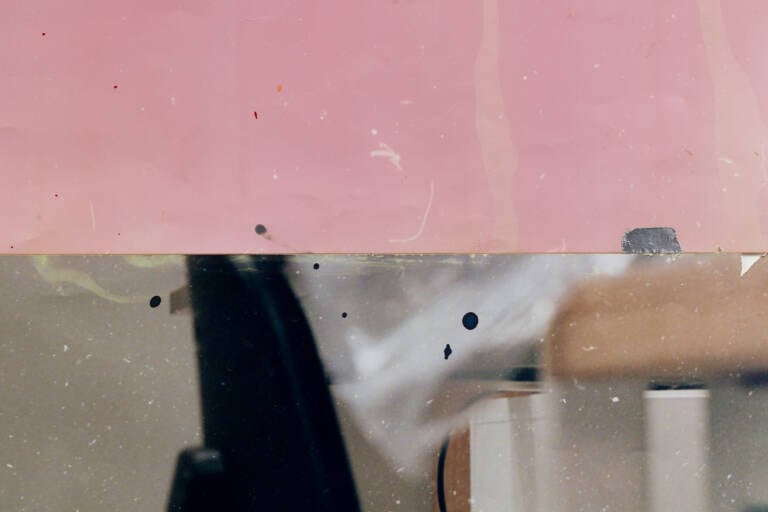In photographer Nat Faulkner’s practice, the image moves beyond representation and into the obscure. Working with liquid iodine and the materiality of the photographic surface, he creates visuals that unfold across the gaze like illuminated manuscripts: worlds blurred by vivid, contrasting hues. A fixture at Soho’s Brunette Coleman, Faulkner’s work travels by word of mouth across London, known for its striking subtlety. Performing his process as a kind of ritual in the dark, he translates a background in sculpture into the language of contemporary photography, experimenting with unconventional printing techniques that further transform the materiality of his images. In this interview with hube, he reflects on the natural evolution of his practice, the beauty of light leaks, and the magic in science.
hube: Much of your past work evokes an “out-of-body” sensation. How do you navigate the tension between working through such physical, analogue gestures and trying to grasp something that resists material form?
Nathaniel Faulkner: My aim has always been to approach my work as a process of uncovering, creating the conditions for it to emerge rather than willing it into being, an autonomy that the darkroom itself cultivates. Working with analogue photographic processes means regulating and controlling certain parameters; in the production of an image, I will choreograph and rehearse that process before finally performing it in the dark. There is a lot of ritual involved, both mentally and physically. When in the dark, at first, it is difficult to move around and my eyes will strain to adjust to the low light, but by the end of the day, the space feels natural and as familiar as daylight. The work becomes a by-product of that collaboration, passively shaped by the studio-as-machine.
The tension between the physical, analogue gestures and the immaterial qualities of my practice is inherent to the medium and its conditions, I only choose to amplify them. Photographs emerge from an environment of sensory deprivation, and the residue of that clings to the work.
h: Distortion runs across your practice, through collage, scale, and printing techniques. Would you say you’re constructing an alternate reality? What kind of “truth” do you think the viewer encounters in these shifted perspectives?
NF: Distortion through enlargement is an interesting notion. In photography, transformations of scale occur constantly, the scene is condensed onto a negative, then enlarged again in print. This bow-tie shape is an apt symbol, what happens during those in-between stages of transformation? Distortion suggests a warping of reality, I’m more interested in magnifying it. I might distill and preserve a solution, suspend silver on glass or copper, or enlarge an image sixtyfold, revealing the film grain and fixing it among the studio dust that drifted into the enlarger. When I use a subject, material, or image, I try to inflate it like a balloon, stretching its information to reveal the DNA.

Untitled (Mercury Way, II), 2025
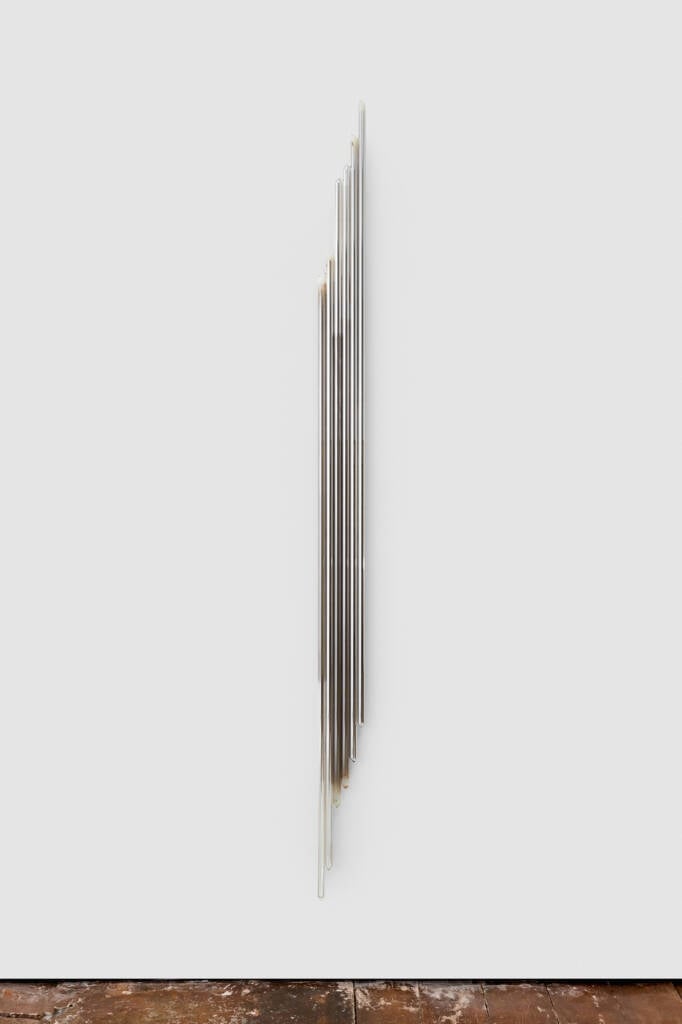
Ampoule IIIIII (Silver), 2024
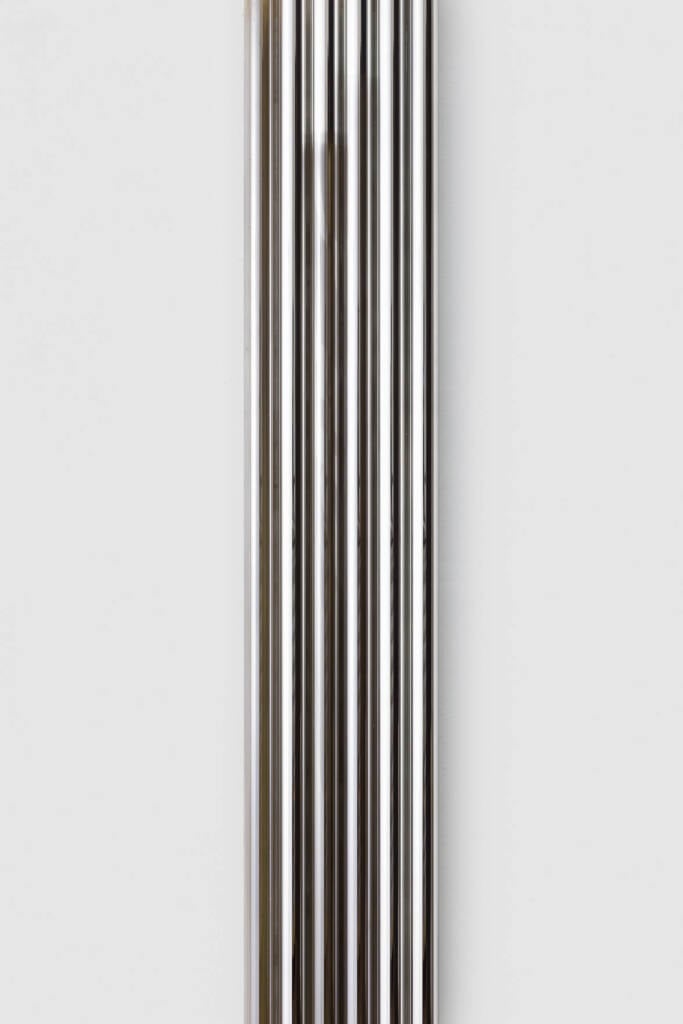
Ampoule IIIIII (Silver) (detail), 2024
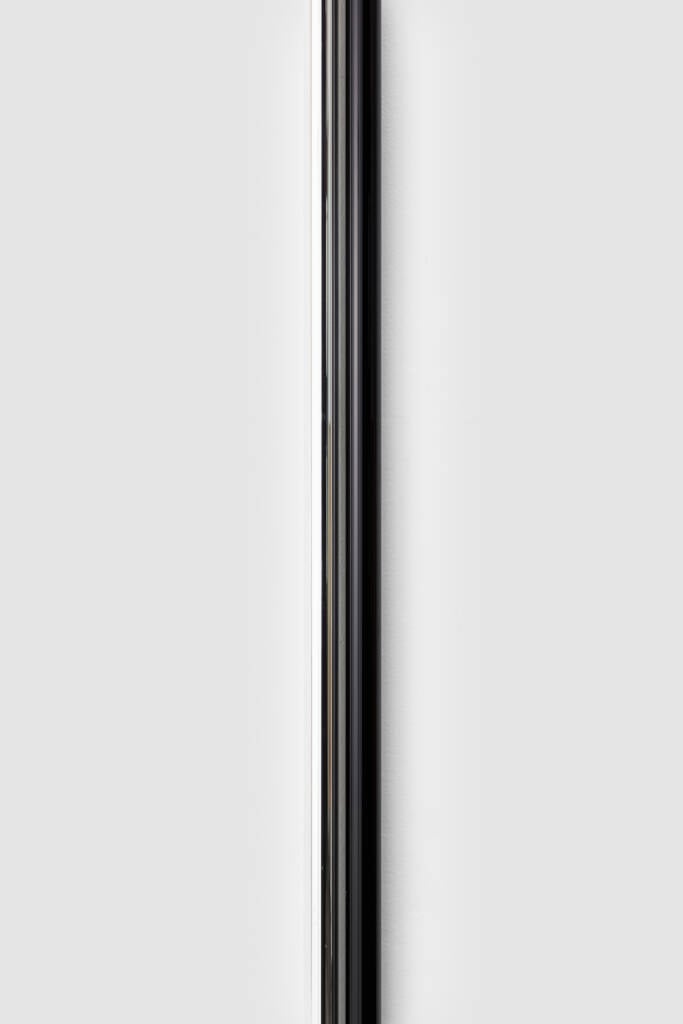
Ampoule II (Positive_Negative) (detail), 2024
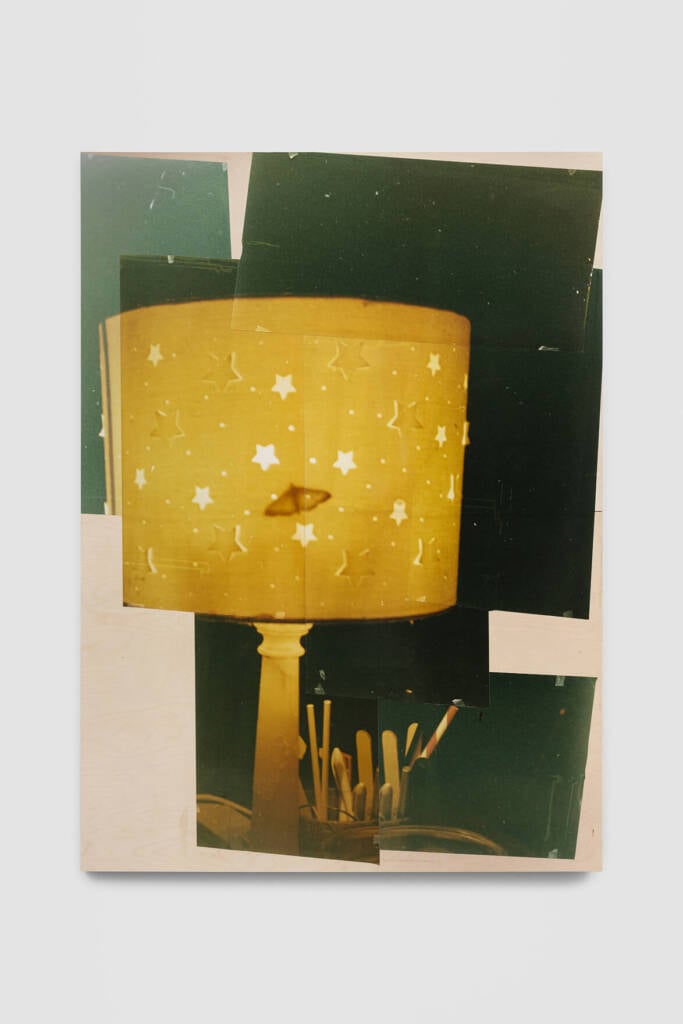
Constellation, 2024
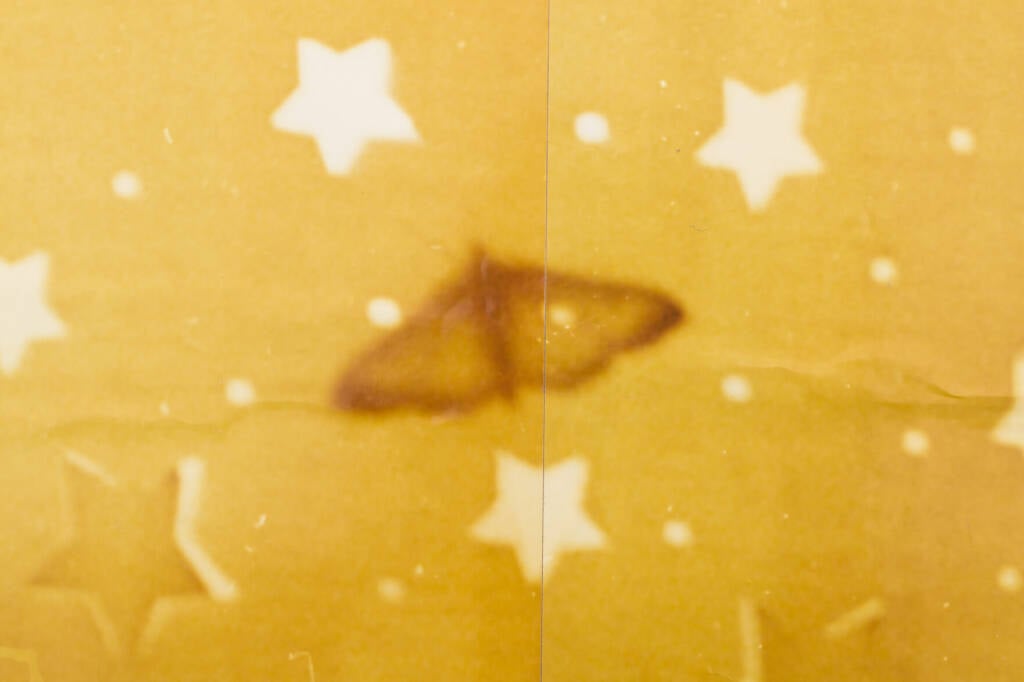
Constellation (detail), 2024
h: Color in your work feels less like a tool and more like a character in its own right. Does it shape the atmosphere of reality, or does it act as a doorway into spaces where that reality begins to unravel?
NF: Many photographers believe that photographs that use colour take colour itself as their subject. If printing in black and white, a light leak in the environment will alter the exposure and that is all. If printing colour photos, the light leak, the time of day, the position of the sun, all of these factors will affect the temperature of the light and the colour cast on the paper. The chemistry used in colour printing is heated to a specific temperature, it also becomes depleted over time, all of these variables will affect the cast of the image too. If I think of the darkroom as an autonomous space, using colour gives it more opportunities to express that autonomy.
h: Your process has an almost alchemical quality. Where do you locate the meeting point between science and the kind of magic that seems to permeate your practice?
NF: Many of the processes I use rely on chemistry. Some I understand, others I follow like instructions, working blindly. Alchemy, a pseudoscience and precursor to modern chemistry, interests me because, like all pseudosciences, it is sometimes effective, often by accident or coincidence. That intersection of science and magic is where my work lies, and photography naturally lends itself to this overlap. In alchemy, silver holds metaphysical significance, its physical reflectivity evokes an abstract receptivity. It is also the operative element in analogue photography, a process that depends entirely on its sensitivity to light and its innate ability to hold an imprint of it. My work in sculpture and installation also draws on alchemical principles such as transformation, unity, correspondence, and purification. I am interested in the alchemical residue: outcomes without measurable progress, but paradoxically geared toward discovery, an aspect I think art itself shares.
h: When you work sculpturally, how do you determine which materials speak the language a piece needs? Is aluminum always cold, while pink paper always blushes—or can those associations be rewritten?
NF: I worked mainly in sculpture before arriving at photography. Initially, I produced images without negatives, working only with objects, light, and chemistry. Most of the work I make that is not image focused utilises material that is derived from those photographic processes. Previously, I employed a redox reaction known as the silver mirror reaction, which coats the inside of a glass vessel with a thin layer of silver, creating a mirror-like surface on its exterior. Sometimes I leave the vessel open, allowing the silver to react with the environment and tarnish over time, a sort of long exposure. Other times, it is hermetically sealed in a glass ampoule, where it becomes latent, suspended in a state of arrested transformation. I have also used rainwater, a material that, in its fixed quantity on earth, goes through a perpetual state of change as part of the rain cycle. It can evaporate, condense, precipitate and collect, but the essence of it, its vitality, is somehow constant.
h: Do you approach your practice as a continuous body that builds toward a theme or exhibition, or does each work arrive on its own terms, with the connections revealing themselves later?
NF: I usually hope and wait for something to emerge, but I think I am getting better at distinguishing what is most likely to take root and proliferate. When I have been more deliberate in where I take a camera and what I point it at, the results are less satisfying than when I take a photo without knowing what it may or may not mean to me yet. I would like to be passive in my making. Gerhard Richter said in an interview that he wants his paintings to ‘evolve of their own accord. I don’t work at random but in a more planned way, in the sense that I let a thing happen by chance, then correct it, and so on. The actual work consists in taking what appears, looking at it and then deciding whether it’s acceptable or not. Miró also compared painting to gardening, saying that things come slowly: ‘Things follow their natural course. They grow, they ripen. I must graft. I must water.’
h: Where do you sense your practice evolving in the next year—or perhaps more intriguingly, what feels impossible for you now that you’d like to make possible?
NF: Currently, I am preparing for an exhibition at Camden Art Centre in London, opening in January 2026. The subject of provenance has become central to the exhibition. A new body of work consists of copper and brass that is plated in silver using electrolysis. The silver I am using to plate the copper sheet is reclaimed from NHS labs, extracted from used X-ray film, a gesture that directly relates to my interest in material, alchemy, science, and image-making. I look forward to learning how this exhibition might germinate within and beyond my practice.

Positive III, 2024
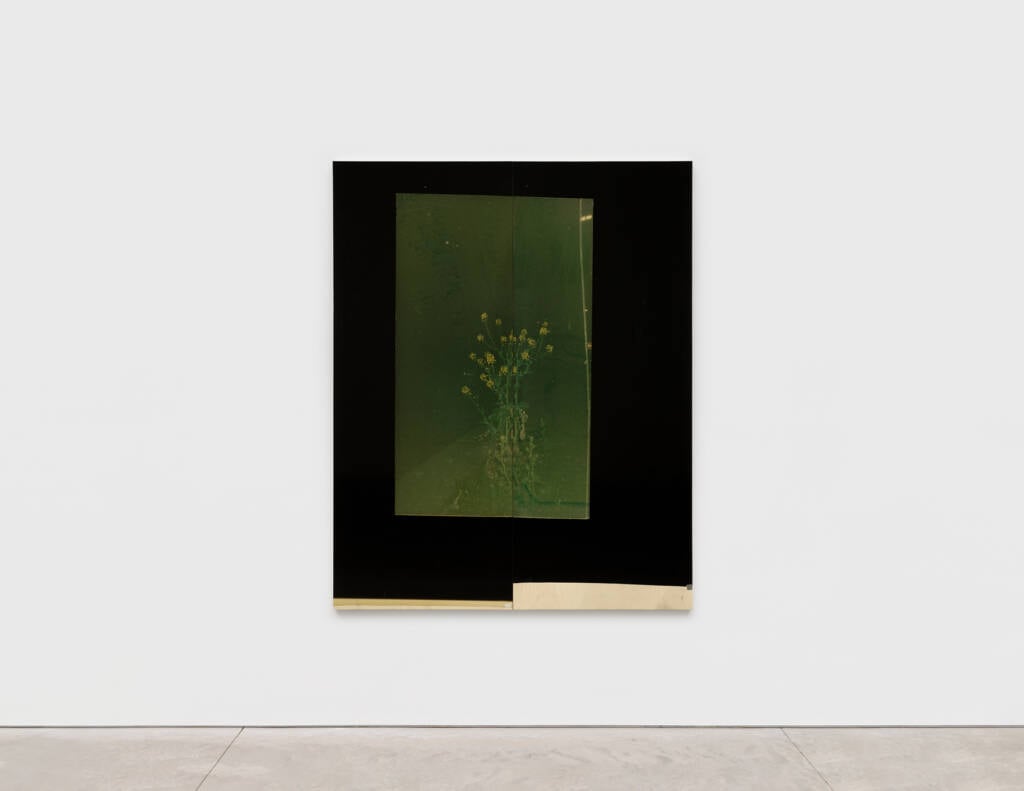
Untitled (Mustard Flower), 2025
Words: JULIA SILVERBERG
